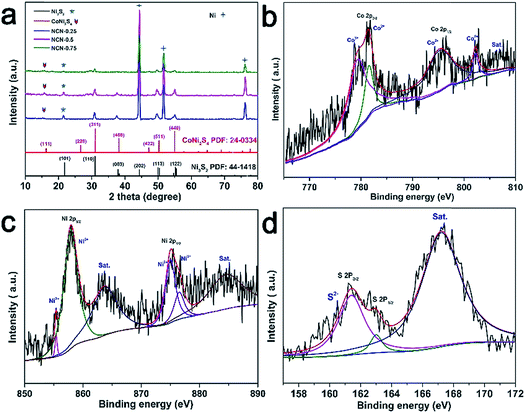 Open Access Article
Open Access ArticleCreative Commons Attribution 3.0 Unported Licence
Correction: A 3D petal-like Ni3S2/CoNi2S4 hybrid grown on Ni foam as a binder-free electrode for energy storage
Fangshuai
Chen
a,
Hui
Wang
a,
Shan
Ji
*b,
Vladimir
Linkov
c and
Rongfang
Wang
*a
aCollege of Chemical Engineering, Qingdao University of Science and Technology, Qingdao, 266042, China. E-mail: wrf38745779@126.com; Fax: +86-931-7971533; Tel: +86-931-7971533
bCollege of Biological, Chemical Science and Chemical Engineering, Jiaxing University, Jiaxing, 314001, China. E-mail: jishan@mail.zjxu.edu.cn; Fax: +86 15024355548; Tel: +86 15024355548
cSouth African Institute for Advanced Materials Chemistry, University of the Western Cape, Cape Town, 7535, South Africa
First published on 23rd January 2019
Abstract
Correction for ‘A 3D petal-like Ni3S2/CoNi2S4 hybrid grown on Ni foam as a binder-free electrode for energy storage’ by Fangshuai Chen et al., Sustainable Energy Fuels, 2018, 2, 1791–1798.
The authors wish to correct Fig. 2 of the manuscript and the corresponding explanation in the text.
Fig. 2 should appear as follows:
The section of text beginning with the sentence “In the Fig. 2c…” should read:
“In the Fig. 2c, the XPS spectra of Ni 2p can be well matched with two shakeup satellites and two spin–orbit doublets characteristic of Ni2+/Ni3+ using Gaussian fitting. As shown in Ni 2p XPS, the binding energies of Ni 2p peaks at ca. 855.4 and 875.0 eV are ascribed to Ni2+, and peaks at 857.9 and 876.5 eV to Ni3+ correspondingly. In the Fig. 2d, the S 2p XPS spectra can be fitted into a main peak and a shakeup satellite peak, in which the peak at 162.0 eV is ascribed to the binding energy of Ni–S and Co–S bonds.”
The Royal Society of Chemistry apologises for these errors and any consequent inconvenience to authors and readers.
| This journal is © The Royal Society of Chemistry 2019 |

